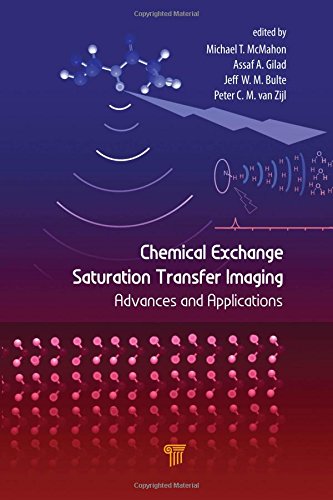

Most ebook files are in PDF format, so you can easily read them using various software such as Foxit Reader or directly on the Google Chrome browser.
Some ebook files are released by publishers in other formats such as .awz, .mobi, .epub, .fb2, etc. You may need to install specific software to read these formats on mobile/PC, such as Calibre.
Please read the tutorial at this link. https://ebooknice.com/page/post?id=faq
We offer FREE conversion to the popular formats you request; however, this may take some time. Therefore, right after payment, please email us, and we will try to provide the service as quickly as possible.
For some exceptional file formats or broken links (if any), please refrain from opening any disputes. Instead, email us first, and we will try to assist within a maximum of 6 hours.
EbookNice Team

Status:
Available5.0
8 reviewsChemical exchange saturation transfer (CEST) imaging is a powerful magnetic resonance imaging (MRI) technique with unique contrast features. This technology enables the amplified detection of nM to mM concentrations of small molecules and macromolecules (including those involved in biologic pathways) through selective radio frequency labeling of rapidly exchanging protons present on the molecules of interest. Because this labeling is frequency dependent, CEST agents have advantages over the more established water relaxation–based contrast agents, making them more similar to optical imaging agents and allowing the detection of multiple agents independently within an anatomical region for a wide range of molecular imaging applications. The rapid expansion that CEST imaging has seen over the past 15 years since its original discovery in 2000 had created a need for a graduate-level handbook describing all aspects of preclinical, translational, and clinical CEST imaging, and this is the first dedicated textbook covering them all.
The book comprises 19 chapters that cover the fundamental principles of saturation transfer, the key features of CEST agents enabling production of imaging contrast, and the practical aspects of image acquisition and imaging post-processing schemes tailored to the specific application. In this book, the leaders who developed CEST imaging at the five key sites present a unique, illustrated, historical perspective from the initial saturation transfer nuclear magnetic resonance (NMR) experiments performed in the 1960s in Stockholm, Sweden, described by Sture Forsén, to the work done on integrating the basic principles of CEST into imaging in the United States and Italy, covered by Robert Balaban, Dean Sherry, Silvio Aime, and Peter van Zijl. The editors, Drs. Michael T. McMahon, Assaf A. Gilad, Jeff W. M. Bulte, and Peter C. M. van Zijl, are pioneers developing this field at the Johns Hopkins University School of Medicine and the Kennedy Krieger Institute.